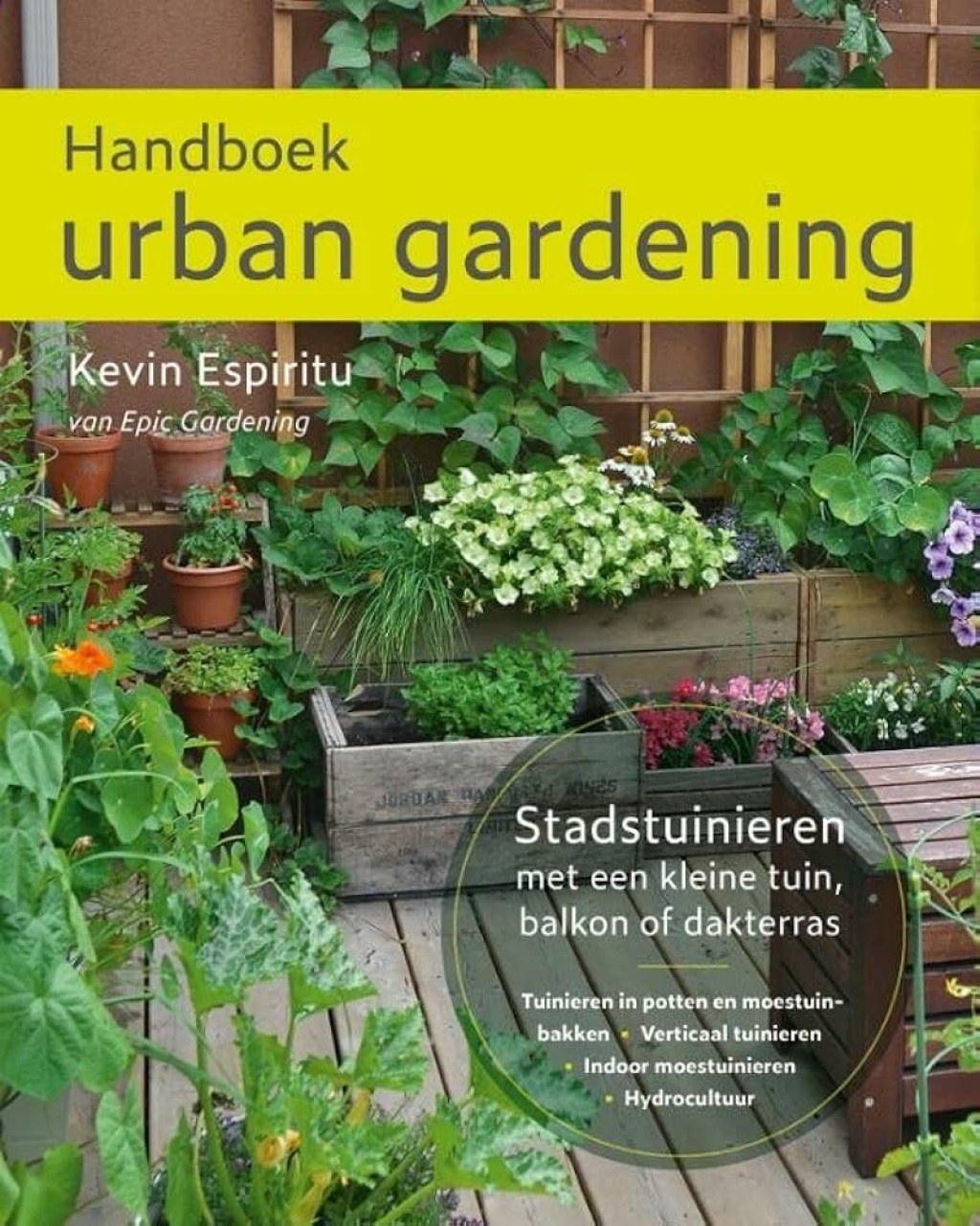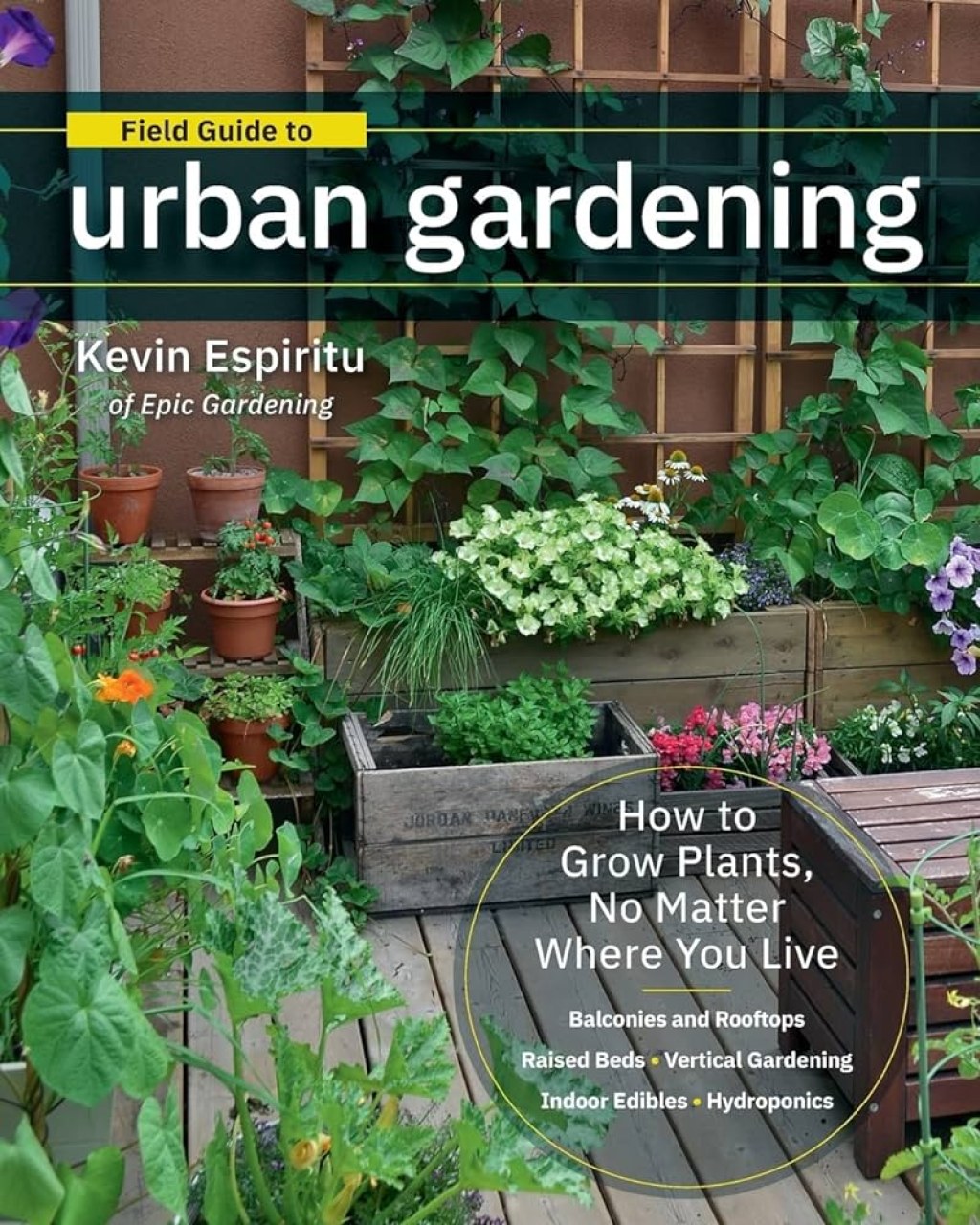Transform Your Space With Urban Gardening Kevin: Unleash The Green Thumb Within And Create A Lush Oasis Today!
Urban Gardening Kevin: Cultivating Green Spaces in the City
Introduction
Dear Readers,
2 Picture Gallery: Transform Your Space With Urban Gardening Kevin: Unleash The Green Thumb Within And Create A Lush Oasis Today!


Welcome to our article on urban gardening and the inspiring story of Kevin, a passionate gardener who has transformed his urban space into a lush green oasis. In this article, we will delve into the what, who, when, where, why, and how of urban gardening, highlighting the advantages and disadvantages of this practice. Whether you are a seasoned gardener or a curious beginner, we hope this article will provide you with valuable insights and inspiration to embark on your own urban gardening journey.

Image Source: media-amazon.com
Now let’s explore the world of urban gardening through the lens of Kevin’s remarkable story.
About Urban Gardening Kevin
🌱 Urban Gardening Kevin is a dedicated enthusiast who has turned his small balcony into a thriving urban garden. Despite living in a bustling city, Kevin has managed to create a serene and sustainable green space. His passion for gardening has not only improved the aesthetics of his surroundings but has also contributed to a healthier environment in his urban neighborhood.
What is Urban Gardening?
Urban gardening, also known as urban farming or urban horticulture, is the practice of cultivating plants and crops in urban areas. It involves growing a wide variety of plants, including vegetables, herbs, flowers, and even trees, in limited spaces such as balconies, rooftops, or community gardens.

Image Source: media-amazon.com
🌱 Urban gardening has gained popularity in recent years as a way to combat food insecurity, promote sustainable living, and enhance the overall well-being of urban dwellers.
Who Can Practice Urban Gardening?
Urban gardening is a versatile hobby that can be enjoyed by people of all ages and backgrounds. Whether you live in a small apartment or a spacious house, urban gardening can be adapted to suit your available space and resources.
🌱 Families, individuals, community groups, and even schools can embrace urban gardening as a means to connect with nature, learn about sustainable practices, and foster a sense of community.
When Can You Start Urban Gardening?
The beauty of urban gardening is that it can be started at any time of the year, regardless of the season. While certain plants thrive in specific weather conditions, there are always options available to gardeners throughout the year.
🌱 Kevin began his urban gardening journey during the spring season, taking advantage of the favorable weather conditions and longer daylight hours. However, he also shares his tips and tricks for maintaining a thriving garden during colder months.
Where Can You Practice Urban Gardening?
Urban gardening can be practiced in various urban settings, depending on the available space and resources. Some common locations include balconies, rooftops, windowsills, community gardens, and even vertical spaces such as living walls or hydroponic systems.
🌱 Kevin’s urban garden is located on his small apartment balcony, showcasing the possibilities of transforming even the most limited spaces into green havens.
Why Choose Urban Gardening?
The reasons behind embracing urban gardening are manifold. Firstly, urban gardening allows individuals to reconnect with nature and experience the joy of growing their own food and plants. It provides a sense of accomplishment and self-sufficiency.
🌱 Additionally, urban gardening has numerous environmental benefits. It improves air quality, reduces the urban heat island effect, conserves water, and promotes biodiversity in cities. Moreover, it can be a form of therapy and stress relief, enhancing mental well-being.
How to Start Your Urban Garden?
Starting your own urban garden requires careful planning and consideration. Here are some essential steps to get you started:
🌱 1. Assess your available space and determine the type and size of garden you wish to create.
🌱 2. Research and choose suitable plants based on your location, climate, and available sunlight.
🌱 3. Prepare the soil or select appropriate containers and potting mix for container gardening.
🌱 4. Invest in essential gardening tools such as a trowel, pruners, watering can, and gloves.
🌱 5. Start sowing seeds or transplanting seedlings, ensuring proper care and maintenance.
🌱 6. Regularly monitor your plants’ health, water them adequately, and provide necessary fertilizers.
🌱 7. Enjoy the fruits of your labor and share your gardening journey with others.
Advantages and Disadvantages of Urban Gardening Kevin
🌱 While urban gardening offers numerous benefits, it also comes with its own set of advantages and disadvantages. Let’s explore these factors in detail:
Advantages of Urban Gardening Kevin
1. Access to Fresh, Organic Produce: By growing your own food, you have control over the quality and safety of your produce, ensuring it is free from harmful chemicals.
2. Environmental Sustainability: Urban gardening reduces the carbon footprint associated with food transportation and promotes sustainable practices such as composting and rainwater harvesting.
3. Community Building: Urban gardens often foster a sense of community and provide opportunities for neighbors to connect, share knowledge, and even organize events or workshops.
4. Beautification of Urban Spaces: Empty lots, rooftops, and balconies can be transformed into vibrant green spaces, enhancing the aesthetics of the city and improving overall well-being.
5. Educational Opportunities: Urban gardening provides a hands-on learning experience, teaching valuable skills related to botany, ecology, and sustainable living.
Disadvantages of Urban Gardening Kevin
1. Limited Space: Urban gardening often requires creative solutions to maximize limited space, and certain plants may not thrive in small containers.
2. Pest and Disease Management: Urban gardens are more susceptible to pests and diseases, requiring regular monitoring and preventive measures to ensure plant health.
3. Time and Effort: Maintaining an urban garden demands time and effort, including regular watering, pruning, and weeding.
4. Dependency on External Factors: Factors such as weather conditions, sunlight availability, and water supply may impact the success of urban gardening.
5. Initial Investment: Starting an urban garden may involve upfront costs such as purchasing containers, soil, tools, and seeds or seedlings.
Frequently Asked Questions (FAQ)
1. Can I practice urban gardening without access to outdoor spaces?
Yes, urban gardening can be adapted to indoor spaces using techniques such as hydroponics or vertical gardening. You can utilize windowsills, indoor grow lights, or even small tabletop gardens.
2. How do I deal with pests in my urban garden?
Pest management in urban gardens can be achieved through various methods, including natural repellents, companion planting, and proper hygiene practices. In severe cases, organic insecticides may be used.
3. What are the best plants for a beginner urban gardener?
As a beginner, you can start with easy-to-grow plants such as herbs (e.g., basil, parsley), salad greens (e.g., lettuce, spinach), or cherry tomatoes. These plants are relatively low maintenance and offer a rewarding gardening experience.
4. How can I make my urban garden more sustainable?
You can make your urban garden more sustainable by implementing practices such as composting kitchen waste, collecting rainwater for irrigation, using organic fertilizers, and planting native species that require less water and maintenance.
5. Can I sell the produce from my urban garden?
Depending on local regulations, you may be able to sell excess produce from your urban garden. However, it is advisable to research and comply with any legal requirements or permits needed for selling food products.
Conclusion
🌱 In conclusion, urban gardening is a remarkable practice that brings nature back into the concrete jungles we call cities. Kevin’s inspiring journey showcases the immense potential of transforming small urban spaces into green havens.
Now it’s your turn to embark on your own urban gardening adventure. Start small, be creative, and watch your urban oasis flourish. Happy gardening!
Final Remarks
🌱 The information provided in this article is intended for educational purposes only. While urban gardening can be a rewarding and sustainable hobby, be sure to research and adapt the practices to suit your specific location, climate, and resources. Remember, every urban space is unique, and experimentation is key to finding what works best for you.
🌱 Always prioritize the well-being of your plants and the environment, using organic and environmentally friendly practices whenever possible. Take joy in the process of nurturing life and contributing to a greener, healthier future for our cities.
This post topic: Gardens



